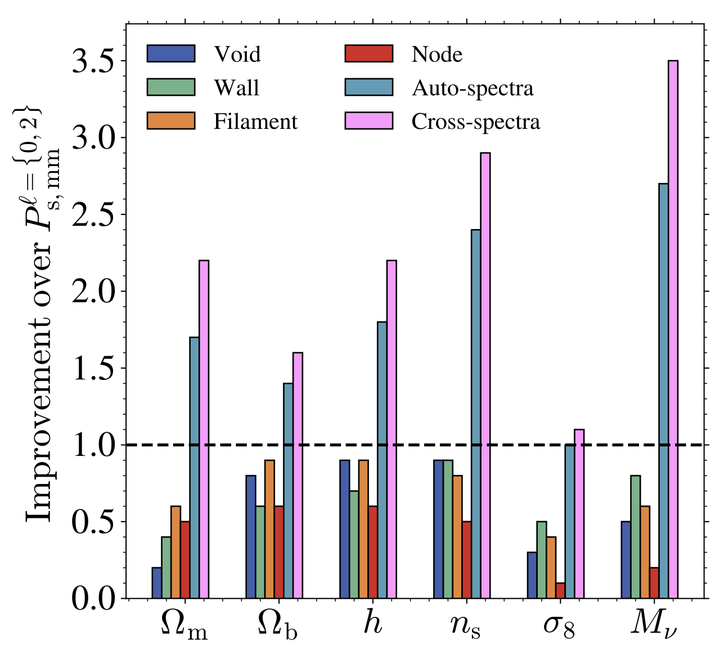 Improvement factors of the several studied statistics over the redshift-space matter monopole + quadrupole constraints for each of the six cosmological parameters at kmax = 0.5 h/Mpc. The horizontal black line shows the unity improvement. Note that these statistics exclude the combination with the matter multipoles and concern uniquely the several cosmic web environments and their combination.
Improvement factors of the several studied statistics over the redshift-space matter monopole + quadrupole constraints for each of the six cosmological parameters at kmax = 0.5 h/Mpc. The horizontal black line shows the unity improvement. Note that these statistics exclude the combination with the matter multipoles and concern uniquely the several cosmic web environments and their combination.
Abstract
Degeneracies among parameters of the cosmological model are known to drastically limit the information contained in the matter distribution. In the first paper of this series, we shown that the cosmic web environments; namely the voids, walls, filaments and nodes; can be used as a leverage to improve the real-space constraints on a set of six cosmological parameters, including the summed neutrino mass.
Following-upon these results, we propose to study the achievable constraints of environment-dependent power spectra in redshift space where the velocities add up information to the standard two-point statistics by breaking the isotropy of the matter density field. A Fisher analysis based on a set of thousands of Quijote simulations allows us to conclude that the combination of power spectra computed in the several cosmic web environments is able to break some degeneracies. Compared to the matter monopole and quadrupole information alone, the combination of environment-dependent spectra tightens down the constraints on key parameters like the matter density or the summed neutrino mass by up to a factor of 5.5. Additionally, while the information contained in the matter statistic quickly saturates at mildly non-linear scales in redshift space, the combination of power spectra in the environments appears as a goldmine of information able to improve the constraints at all the studied scales from 0.1 to 0.5 h/Mpc and suggests that further improvements are reachable at even finer scales.